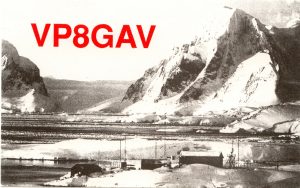What are the “Domes” ?
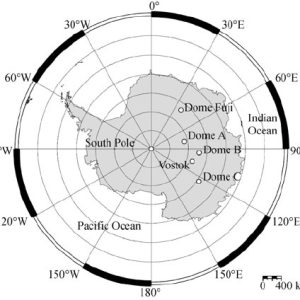 They are very flat snow summits across the Antarctic High plateau. From what I know, they’ve been named more or less according to their altitude while being discovered by the first pilots to fly airplanes across the continent in the 50s.
They are very flat snow summits across the Antarctic High plateau. From what I know, they’ve been named more or less according to their altitude while being discovered by the first pilots to fly airplanes across the continent in the 50s.
There are several “Domes” in Antarctica as shown on the Map:
Dome A, Dome B (aka Ridge B), 200 km upstream of the Vostok ice core), Dome C, Talos Dome, Titan Dome, an unnamed ice Dome located near to South Pole and Dome Fuji
Dome A (aka Dome Argus)
 Dome Argus at 80°22′ South, 77°22′ East, has a surface elevation of 4,093 m. It is the highest place in East Antarctica and also one of the least-known places on the globe. An automatic weather station provides data from this remote site.
Dome Argus at 80°22′ South, 77°22′ East, has a surface elevation of 4,093 m. It is the highest place in East Antarctica and also one of the least-known places on the globe. An automatic weather station provides data from this remote site.
Dome Argus lies near one end of a ridge about 60 km long and 10 km wide. The ice there is more than 3,000 m thick, overlaying the subglacial Gamburtsev Mountains.
At Dome A, an Automatic weather station (AWS) was set up as part of anAustralian-Chinese collaboration in January 2005. No ground-based scientific investigation had been made at this site before the arrival of the Chinese over-snow traverse team.
Source: Dome Argus – Australian Antarctic Program (antarctica.gov.au)
Dome B (aka Ridge B)
3807 m above sea level at , 79.02°South, 93.69°East, Dome B was discovered at a distance of 170 km from the Russian Vostok Station.
Source: First glaciological investigations at Ridge B, central East Antarctica | Antarctic Science | Cambridge Core
Dome C
Dome C, also known as Dome Circe, Dome Charlie or Dome Concordia, is situated on top of the Antarctic Polar Plateau, the world’s largest frozen desert ever, at an elevation of 3,233 metres (10,607 ft) above sea level, is one of several summits or “Domes” of the Antarctic Ice Sheet.
 Dome C is the site of the Concordia Research Station (75°06’06” South, 123°23’ 43” East) jointly operated by France and Italy.
Dome C is the site of the Concordia Research Station (75°06’06” South, 123°23’ 43” East) jointly operated by France and Italy.
In the 1970s, Dome C was the site of ice core drilling by field teams of several nations. It was called Dome Charlie. In 1992, France decided to build a new station on the Antarctic Plateau. The program was later joined by Italy. In 1996, a French-Italian team established a Summer camp at Dome C. The two main objectives of the camp were the provision of logistical support for the European Project for IceCoring in Antarctica (EPICA) and the construction of a permanent research station. The new all-year facility,Concordia Station, became operational in 2005.
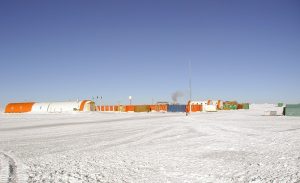 The so called Dome C summer Camp (75°05’59” South, 123°19’ 56” East), about 700 mts from Concordia Station was never dismantled and actually is used as it was in 1996. This Dome C summer camp, pic aside, before the construction of the two towers of Concordia, was the support base of the first Epica project, then it was the support site for the workers who built Concordia Station. Actually, Dome C summer Camp is just a depot with housing and warehouse. All the scientific equipments are inside the towers of Concordia and inside the shelters scattered around the Base. “Dome C Summer Camp” will be add as WAP MNB-NEW to WAP-WADA Directory.
The so called Dome C summer Camp (75°05’59” South, 123°19’ 56” East), about 700 mts from Concordia Station was never dismantled and actually is used as it was in 1996. This Dome C summer camp, pic aside, before the construction of the two towers of Concordia, was the support base of the first Epica project, then it was the support site for the workers who built Concordia Station. Actually, Dome C summer Camp is just a depot with housing and warehouse. All the scientific equipments are inside the towers of Concordia and inside the shelters scattered around the Base. “Dome C Summer Camp” will be add as WAP MNB-NEW to WAP-WADA Directory.
Most of the cargo coming by traverse from Dumont d’Urville Station, covering 1,200 km in 7 to 12 days depending on weather conditions, moved to Dome C and unloaded at the summer camp. Station personnel and light cargo instead arrive by air, using Twin Otter aircraft from DDU or Mario Zucchelli Station at 1200 km.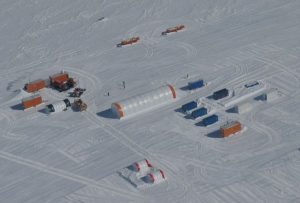
The Project Epica Beyond at Little Dome C is about 32 km from Concordia and the site is called Little Dome C-Epica Beyond, (WAP MNB-NEW).
Dome C North Radar
The radar of the SuperDARN network is located at 1.4 km from the Franco-Italian base Concordia, at Dome C, i.e. very close to the Antarctic geomagnetic pole, at about 3200 m above sea level. This makes it the highest geomagnetic latitude radar and the highest altitude radar. Its field of view conjugates with those of the McMurdo radar and the just installed South Pole radar.’
Super Dual Auroral Radar Network (SuperDARN) radar installed at the Concordia Station in Antarctica and denominated Dome C North (DCN) saw the first light. SuperDARN is an international network of HF radars that observe the effects produced in the ionosphere by the chain of phenomena taking place in the Earth’s space environment. DCN and its companion radar Dome C East (DCE) are positioned nearby the southern geomagnetic pole with their Field of View extending towards the auroral latitudes. Here we present the analysis of the first year of observations as a function of the interplanetary conditions.
Source: Dome C North radar, a new radar of the SuperDARN network: the first year of observations. – NASA/ADS (harvard.edu)
and: SuperDARN radar now operating at Dome C in Antarctica!
Talos Dome
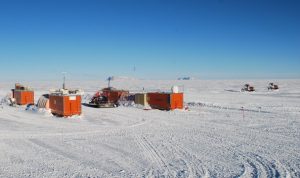 Talos Dome is an ice dome on the edge of the East Antarctic plateau; because accumulation is higher here than in other domes of East Antarctica, the ice preserves a good geochemical and palaeoclimatic record. A new map of the Talos Dome area locates the dome summit elevation (2318.5m) using the global positioning system (GPS) (72˚47’ 14’’South, 159˚04’ 2’’ East).
Talos Dome is an ice dome on the edge of the East Antarctic plateau; because accumulation is higher here than in other domes of East Antarctica, the ice preserves a good geochemical and palaeoclimatic record. A new map of the Talos Dome area locates the dome summit elevation (2318.5m) using the global positioning system (GPS) (72˚47’ 14’’South, 159˚04’ 2’’ East).
Source : Geophysical survey at Talos Dome, East Antarctica: the search for a new deep-drilling site | Annals of Glaciology | Cambridge Core
and Dr. Jérôme CHAPPELLAZ – Some of my pictures taken during scientific field expeditions (jerome-chappellaz.com)
Titan Dome
Based on sparse data, Titan Dome has been identified as having a higher probability of containing ice that would capture the middle Pleistocene transition (1.25 to 0.7 Ma). New aerogeophysical observations (radar and laser altimetry) collected over Titan Dome, located about 200 km from the South Pole within the East Antarctic Ice Sheet, were used to characterize the region (e.g., geometry, internal structure, bed reflectivity, and flow history) and assess its suitability as a paleoclimate ice core site.
Source: TC – Aerogeophysical characterization of Titan Dome, East Antarctica, and potential as an ice core target (copernicus.org)
Dome Fuji (aka Dome F)
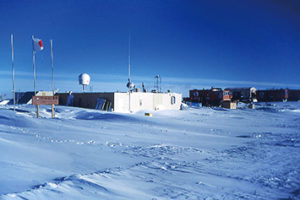 Dome Fuji also called Dome F or Valkyrie Dome is an ice dome rising to about 3,810 m (12,500 ft) above sea level in the eastern part of Queen Maud Land (77°30’South, 37°30’ East).
Dome Fuji also called Dome F or Valkyrie Dome is an ice dome rising to about 3,810 m (12,500 ft) above sea level in the eastern part of Queen Maud Land (77°30’South, 37°30’ East).
Dome F it’s the second-highest summit or ice dome of the East Antarctic Ice Sheet . Dome F is the site of Dome Fuji Station, a research station operated by Japan
Located in the eastern part of Queen Maud Land, Dome Fuji is a zone of ice that characterizes it as a special place, with more than 720,000 years of history recorded in its ice. Japan was encouraged to install a scientific base, Dome Fuji Base, despite the complexity of its supply and maintenance.
DOME FUJI: 720,000 YEARS OF HISTORY IN ICE – Inuit WindSled (greenland.net)
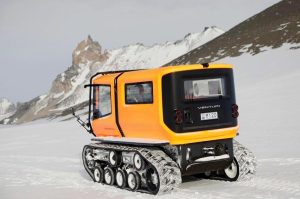 Inspired by HSH Prince Albert II of Monaco Exploration, after he visited Antarctica in 2009, the very first EV’s (Electric Vehicles) it’s currently in service at Belgium’s Princess Elisabeth Antarctica Station (WAP BEL-Ø2). The Prince, wanted to develop a machine that could operate on the Icy Continent without affecting the ecosystem.
Inspired by HSH Prince Albert II of Monaco Exploration, after he visited Antarctica in 2009, the very first EV’s (Electric Vehicles) it’s currently in service at Belgium’s Princess Elisabeth Antarctica Station (WAP BEL-Ø2). The Prince, wanted to develop a machine that could operate on the Icy Continent without affecting the ecosystem.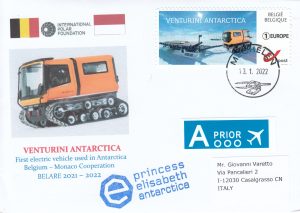

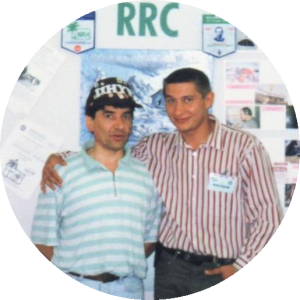
 Valery Sushkov (
Valery Sushkov (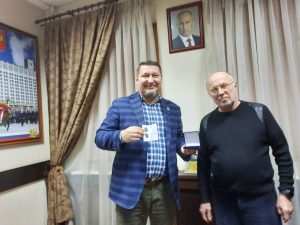 The award was presented to Valery Sushkov RMØL by the head of the organizing committee of the project
The award was presented to Valery Sushkov RMØL by the head of the organizing committee of the project 
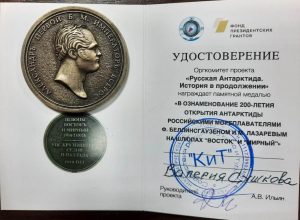 Kit. The obverse of the medal exactly copies the original, made by order of Emperor Alexander I for the expedition teams of Thaddeus Bellingshausen and Mikhail Lazarev. On the reverse is a dedication to the circumnavigation of the sailing ships Kruzenshtern, Sedov and Pallada.
Kit. The obverse of the medal exactly copies the original, made by order of Emperor Alexander I for the expedition teams of Thaddeus Bellingshausen and Mikhail Lazarev. On the reverse is a dedication to the circumnavigation of the sailing ships Kruzenshtern, Sedov and Pallada.
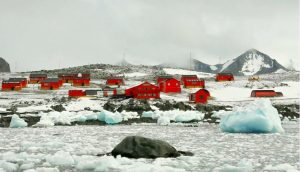 For the first time since the start of the pandemic, Coronavirus has reached an Argentine research base in Antarctica, causing the evacuation of nine unvaccinated staff who tested positive for Covid-19, an official said Thursday.
For the first time since the start of the pandemic, Coronavirus has reached an Argentine research base in Antarctica, causing the evacuation of nine unvaccinated staff who tested positive for Covid-19, an official said Thursday.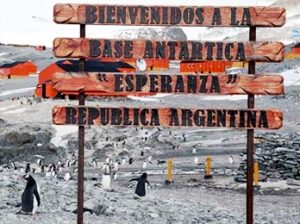
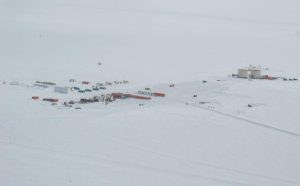 Following the operation by David Brunet F4FKT who did sign FT4YM/p (November & Dicember 2021 and January 2022), at Dome C-Summer Camp 75° 05’ 59” South, 123° 19’ 56” East, a new WAP reference has been issued.
Following the operation by David Brunet F4FKT who did sign FT4YM/p (November & Dicember 2021 and January 2022), at Dome C-Summer Camp 75° 05’ 59” South, 123° 19’ 56” East, a new WAP reference has been issued. Dome C Smmer camp was never dismantled and actually is used as a depot with housing and warehouse. All the scientific equipments are inside the towers of Concordia and inside the shelters scattered around the Base.
Dome C Smmer camp was never dismantled and actually is used as a depot with housing and warehouse. All the scientific equipments are inside the towers of Concordia and inside the shelters scattered around the Base. The 19th edition of the Antarctic Activity Week will start next February 21st and will last till February 28th 2022. Note that this is the date suggested, but everyone can get involved before or after this window.
The 19th edition of the Antarctic Activity Week will start next February 21st and will last till February 28th 2022. Note that this is the date suggested, but everyone can get involved before or after this window.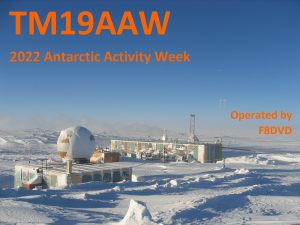
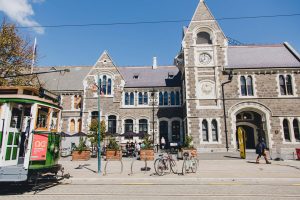 An interesting view of the six landmarks have been published on Newstalk ZB, by Thomas Bywater, NZ Herald.
An interesting view of the six landmarks have been published on Newstalk ZB, by Thomas Bywater, NZ Herald.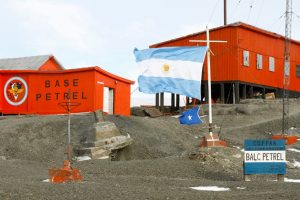 Good news is coming from Argentina: Base Naval Petrel
Good news is coming from Argentina: Base Naval Petrel 
 They are very flat snow summits across the Antarctic High plateau. From what I know, they’ve been named more or less according to their altitude while being discovered by the first pilots to fly airplanes across the continent in the 50s.
They are very flat snow summits across the Antarctic High plateau. From what I know, they’ve been named more or less according to their altitude while being discovered by the first pilots to fly airplanes across the continent in the 50s. Dome Argus at 80°22′ South, 77°22′ East, has a surface elevation of 4,093 m. It is the highest place in East Antarctica and also one of the least-known places on the globe. An automatic weather station provides data from this remote site.
Dome Argus at 80°22′ South, 77°22′ East, has a surface elevation of 4,093 m. It is the highest place in East Antarctica and also one of the least-known places on the globe. An automatic weather station provides data from this remote site. Dome C is the site of the Concordia Research Station (75°06’06” South, 123°23’ 43” East) jointly operated by France and Italy.
Dome C is the site of the Concordia Research Station (75°06’06” South, 123°23’ 43” East) jointly operated by France and Italy. The so called Dome C summer Camp (75°05’59” South, 123°19’ 56” East), about 700 mts from Concordia Station was never dismantled and actually is used as it was in 1996. This Dome C summer camp, pic aside, before the construction of the two towers of Concordia, was the support base of the first Epica project, then it was the support site for the workers who built Concordia Station. Actually, Dome C summer Camp is just a depot with housing and warehouse. All the scientific equipments are inside the towers of Concordia and inside the shelters scattered around the Base. “Dome C Summer Camp” will be add as WAP MNB-NEW to WAP-WADA Directory.
The so called Dome C summer Camp (75°05’59” South, 123°19’ 56” East), about 700 mts from Concordia Station was never dismantled and actually is used as it was in 1996. This Dome C summer camp, pic aside, before the construction of the two towers of Concordia, was the support base of the first Epica project, then it was the support site for the workers who built Concordia Station. Actually, Dome C summer Camp is just a depot with housing and warehouse. All the scientific equipments are inside the towers of Concordia and inside the shelters scattered around the Base. “Dome C Summer Camp” will be add as WAP MNB-NEW to WAP-WADA Directory.
 Talos Dome is an ice dome on the edge of the East Antarctic plateau; because accumulation is higher here than in other domes of East Antarctica, the ice preserves a good geochemical and palaeoclimatic record. A new map of the Talos Dome area locates the dome summit elevation (2318.5m) using the global positioning system (GPS) (72˚47’ 14’’South, 159˚04’ 2’’ East).
Talos Dome is an ice dome on the edge of the East Antarctic plateau; because accumulation is higher here than in other domes of East Antarctica, the ice preserves a good geochemical and palaeoclimatic record. A new map of the Talos Dome area locates the dome summit elevation (2318.5m) using the global positioning system (GPS) (72˚47’ 14’’South, 159˚04’ 2’’ East). Dome Fuji also called Dome F or Valkyrie Dome is an ice dome rising to about 3,810 m (12,500 ft) above sea level in the eastern part of Queen Maud Land (77°30’South, 37°30’ East).
Dome Fuji also called Dome F or Valkyrie Dome is an ice dome rising to about 3,810 m (12,500 ft) above sea level in the eastern part of Queen Maud Land (77°30’South, 37°30’ East). From the Homepage of
From the Homepage of 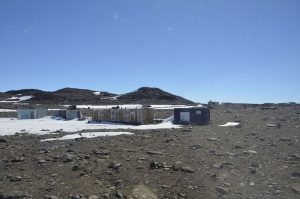 A group of scientists have arrived at the only Polish research station on mainland Antarctica, which has been dormant since 1979 but will now be reactivated.
A group of scientists have arrived at the only Polish research station on mainland Antarctica, which has been dormant since 1979 but will now be reactivated.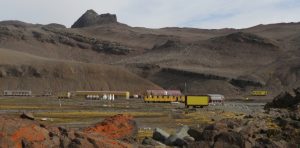 A.B. Dobrowolski Polar Station (
A.B. Dobrowolski Polar Station (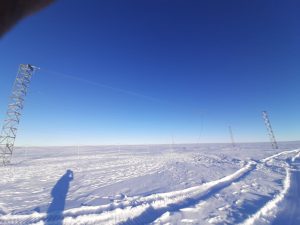 Nice pileup last night on 7189 where Sebastian Gleich SQ1SGB was testing the new antenna just installed at Halley VI-a Base (
Nice pileup last night on 7189 where Sebastian Gleich SQ1SGB was testing the new antenna just installed at Halley VI-a Base (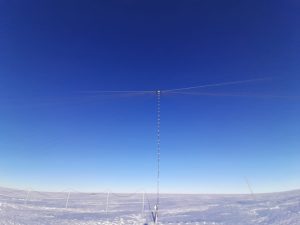
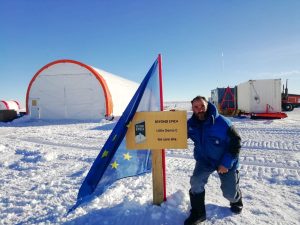 The European Project for Ice Coring in Antarctica (
The European Project for Ice Coring in Antarctica (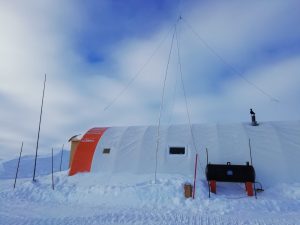
 Indian origin British Sikh army officer Harpreet Chandi, a 32 years old, has become the first woman of color to complete a solo expedition to the South Pole.
Indian origin British Sikh army officer Harpreet Chandi, a 32 years old, has become the first woman of color to complete a solo expedition to the South Pole.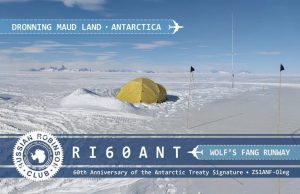 After having been active from Wolf’s Fang Runway (
After having been active from Wolf’s Fang Runway (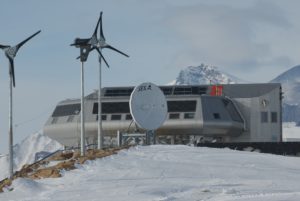 According to a report, 16 of 25 workers at the Belgian Princess Elizabeth Station (
According to a report, 16 of 25 workers at the Belgian Princess Elizabeth Station ( Another year has gone with poor propagation, just few DX on our Log and … too many troubles all around. Covid hit hard everywhere and we all went through a year of anxiety and fear.
Another year has gone with poor propagation, just few DX on our Log and … too many troubles all around. Covid hit hard everywhere and we all went through a year of anxiety and fear.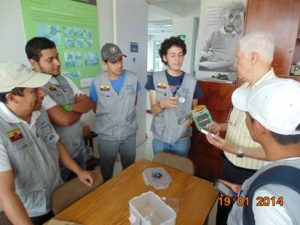 José Vicente Jaramillo Valdivieso (HC3TAC) has been active as HD9A/CE8 on 8 & 9 February 2014 operating from the Sub Antarctic Punta Arenas, Magallanes Province, Chile
José Vicente Jaramillo Valdivieso (HC3TAC) has been active as HD9A/CE8 on 8 & 9 February 2014 operating from the Sub Antarctic Punta Arenas, Magallanes Province, Chile 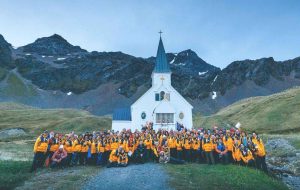 “The Whalers’ Church” is a typical Norwegian timber church. It was commissioned, and largely financed, by Carl Anton Larsen and designed by his son inlaw , architect. The Church was prefabricated in Strømmen, Norway, and erected by the Station workers in their spare time. The two bells in the steeple rung out on 1913’ Christmas Eve. On the following day, Solveig Jacobsen, granddaughter of CA Larsen, was baptised by the pastor Kristen Løken.
“The Whalers’ Church” is a typical Norwegian timber church. It was commissioned, and largely financed, by Carl Anton Larsen and designed by his son inlaw , architect. The Church was prefabricated in Strømmen, Norway, and erected by the Station workers in their spare time. The two bells in the steeple rung out on 1913’ Christmas Eve. On the following day, Solveig Jacobsen, granddaughter of CA Larsen, was baptised by the pastor Kristen Løken. Venner (Norway’s Friends of South Georgia) who arrived on the cruise ship Fram as part of a voyage to celebrate the Church’s anniversary.
Venner (Norway’s Friends of South Georgia) who arrived on the cruise ship Fram as part of a voyage to celebrate the Church’s anniversary.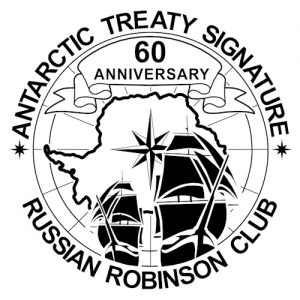 The marathon dedicated to 6Ø ATS is coming to end. It was a wonderful six months activity, with many stations involved to give everybody a great chance and a nice mood in logging special callsigns.
The marathon dedicated to 6Ø ATS is coming to end. It was a wonderful six months activity, with many stations involved to give everybody a great chance and a nice mood in logging special callsigns.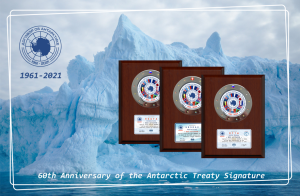 Special wood or metal Plaques and Cerificates are available on request through Oleg, UA6GG/RG60ANT at
Special wood or metal Plaques and Cerificates are available on request through Oleg, UA6GG/RG60ANT at  WAP Antarctic Bulletin 291 is online with the most rececent information of activity by various Hams .
WAP Antarctic Bulletin 291 is online with the most rececent information of activity by various Hams .
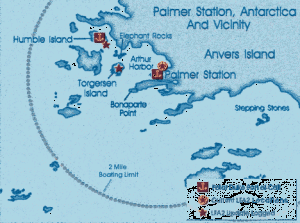 Within an Antarctic sea squirt, scientists discover a bacterial species with promising anti-melanoma properties. ScienceDaily has secently pubblish an interesting item about a study done by Desert Research Institute: New study brings important advances for Antarctic science and natural products chemistry
Within an Antarctic sea squirt, scientists discover a bacterial species with promising anti-melanoma properties. ScienceDaily has secently pubblish an interesting item about a study done by Desert Research Institute: New study brings important advances for Antarctic science and natural products chemistry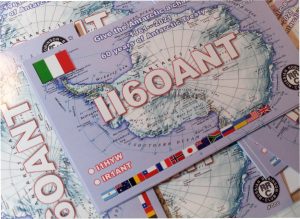 Brand new QSL for the italian special event station joining the 6Ø anniversary of the Antarctic Treaty Signature’s celebration
Brand new QSL for the italian special event station joining the 6Ø anniversary of the Antarctic Treaty Signature’s celebration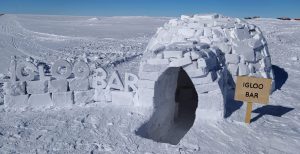 Thanks to the collaboration of many volunteers, including our friend Danilo Collino IZ1KHY, the first Igloo Bar of the Antarctic Plateau, has been created at Concordia Station (
Thanks to the collaboration of many volunteers, including our friend Danilo Collino IZ1KHY, the first Igloo Bar of the Antarctic Plateau, has been created at Concordia Station (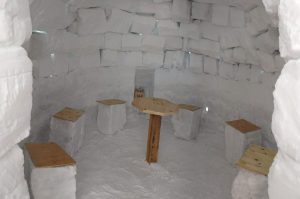 This Igloo Bar just built, remind us another great “ice sculpture” made at Concordia Station by Daniele Karlicek an italian researcher. It was the Church of Daniele’s town, Muggia near Trieste in North West Italy. (
This Igloo Bar just built, remind us another great “ice sculpture” made at Concordia Station by Daniele Karlicek an italian researcher. It was the Church of Daniele’s town, Muggia near Trieste in North West Italy. (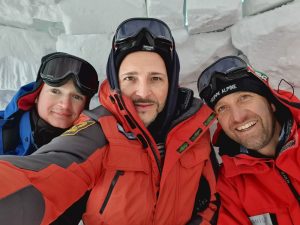
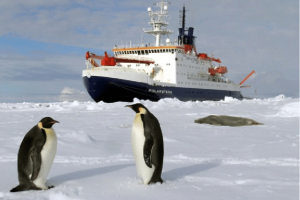 Few days ago the German Research Ship Polarstern set off from Bremerhaven for Antarctica. DPØPOL/MM
Few days ago the German Research Ship Polarstern set off from Bremerhaven for Antarctica. DPØPOL/MM 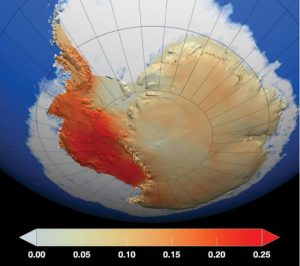 Antarctica, the fifth-largest continent, is commonly known for penguins, massive calving ice shelves and failed exploratory expeditions.
Antarctica, the fifth-largest continent, is commonly known for penguins, massive calving ice shelves and failed exploratory expeditions.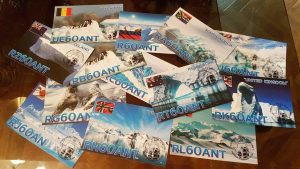 Eugene Shelkanovtsev, RZ3EC informs the chasers that QSLs for the Russian activity at 60th Antarctic Treaty Signature’s Anniversary are now ready.
Eugene Shelkanovtsev, RZ3EC informs the chasers that QSLs for the Russian activity at 60th Antarctic Treaty Signature’s Anniversary are now ready.
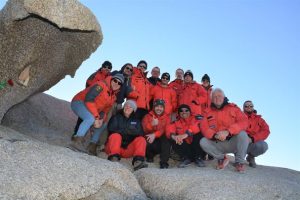
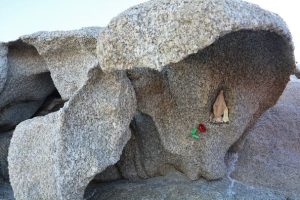 Gianfranco wrote: There is no church at MZS (
Gianfranco wrote: There is no church at MZS (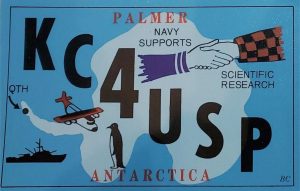 he was at the US Palmer Station for 5 months in 1970. Dr. Peter Becker sent us a brief comment of his experience down South: «A Ham could operate on a
he was at the US Palmer Station for 5 months in 1970. Dr. Peter Becker sent us a brief comment of his experience down South: «A Ham could operate on a 


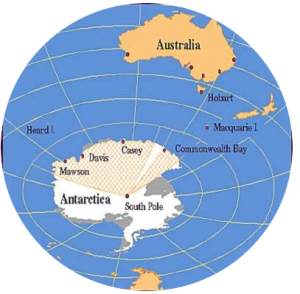 The Australian government has cancelled the proposed aerodrome near Davis Sation (
The Australian government has cancelled the proposed aerodrome near Davis Sation (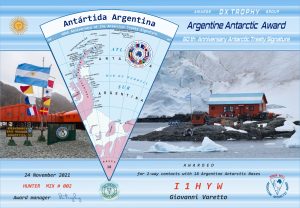 There are two kinds of ARGENTINA ANTARCTIC AWARD available in CW, SSB, DIGI, MIX (CW/SSB), ALL (CW / SSB / DIGI) for two-way QSO’s / SWL’s with various Argentine stations locatewd below 60° South, in Antarctica, in any period of time on any bands.
There are two kinds of ARGENTINA ANTARCTIC AWARD available in CW, SSB, DIGI, MIX (CW/SSB), ALL (CW / SSB / DIGI) for two-way QSO’s / SWL’s with various Argentine stations locatewd below 60° South, in Antarctica, in any period of time on any bands.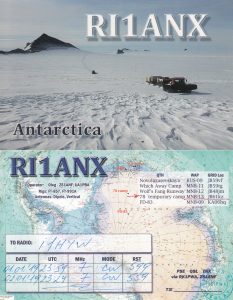 Also known as 78 Temporary Camp (other then Traverse Stop Point ),
Also known as 78 Temporary Camp (other then Traverse Stop Point ), 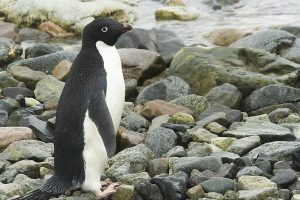 An Adélie penguin that washed up on a rocky New Zealand beach — nearly 2,000 miles (3,218 kilometers) from its home in Antarctica — last week, has been released back into the wild, experts say.
An Adélie penguin that washed up on a rocky New Zealand beach — nearly 2,000 miles (3,218 kilometers) from its home in Antarctica — last week, has been released back into the wild, experts say. Captain Preet Chandi did embark November 7 on the long voyage to Antarctica. Once there, she hopes to become the first woman of color to ski solo and unsupported to the South Pole. According to the latest
Captain Preet Chandi did embark November 7 on the long voyage to Antarctica. Once there, she hopes to become the first woman of color to ski solo and unsupported to the South Pole. According to the latest 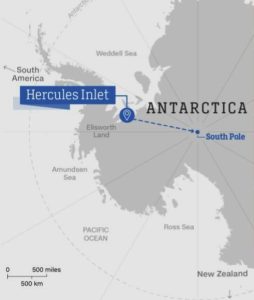 The sun will never set but temperatures could dip as low as minus 50 Celsius (minus 58 Fahrenheit) with wind chill. Her only contact with the outside world will be a daily check-in with her support team.
The sun will never set but temperatures could dip as low as minus 50 Celsius (minus 58 Fahrenheit) with wind chill. Her only contact with the outside world will be a daily check-in with her support team.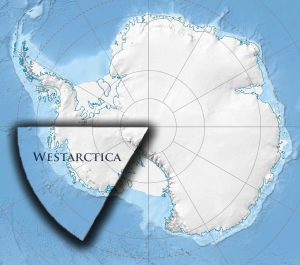 In 2001 Travis McHenry laid claim to the largest contiguous portion of the nation by filing a claimant letter with the nine world governments that have also expressed legal claims of ownership to portions of the continent (though none to the sector claimed by McHenry). The territory consists mostly of Marie Byrd Land and a large proportion of Ellsworth Land. It has no year round residents, although seasonal Research Stations are located in the region. The nation of Westarctica was founded through a loophole in the Antarctic Treaty. (Source:
In 2001 Travis McHenry laid claim to the largest contiguous portion of the nation by filing a claimant letter with the nine world governments that have also expressed legal claims of ownership to portions of the continent (though none to the sector claimed by McHenry). The territory consists mostly of Marie Byrd Land and a large proportion of Ellsworth Land. It has no year round residents, although seasonal Research Stations are located in the region. The nation of Westarctica was founded through a loophole in the Antarctic Treaty. (Source: 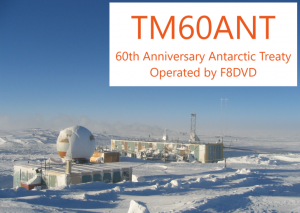 François, F8DVD, will operate TM6ØANT to commemorate the 6Øth Anniversary of Antarctic Treaty Signature.
François, F8DVD, will operate TM6ØANT to commemorate the 6Øth Anniversary of Antarctic Treaty Signature.
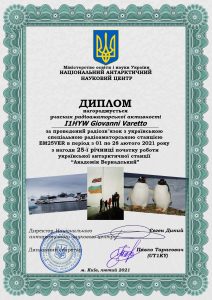 Located on the tiny island of Galindez in the Antarctic Circle, the Vernadsky Station (
Located on the tiny island of Galindez in the Antarctic Circle, the Vernadsky Station ( China’s research icebreaker Xuelong, or Snow Dragon, set off from Shanghai on on Friday Nov 5, marking the start of the Country’s 38th Antarctic expedition.
China’s research icebreaker Xuelong, or Snow Dragon, set off from Shanghai on on Friday Nov 5, marking the start of the Country’s 38th Antarctic expedition.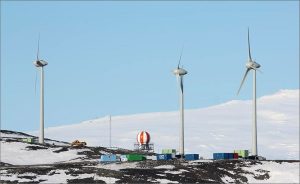 A UC research project evaluating the feasibility of hydrogen production in Antarctica could help to reduce carbon emissions in the future by replacing fossil fuels with a zero-carbon alternative.
A UC research project evaluating the feasibility of hydrogen production in Antarctica could help to reduce carbon emissions in the future by replacing fossil fuels with a zero-carbon alternative.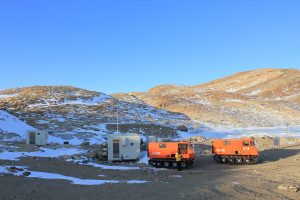 Japanese Yukidori Hut (69°00’30”South, 39°46’00”East) about 20 km to the South from Syowa base (WAP JPN-Ø3), it’s a site for observation and scientific measurement such as geosphere and marine life. Yukidori is Japanese for “snow petrel”.
Japanese Yukidori Hut (69°00’30”South, 39°46’00”East) about 20 km to the South from Syowa base (WAP JPN-Ø3), it’s a site for observation and scientific measurement such as geosphere and marine life. Yukidori is Japanese for “snow petrel”.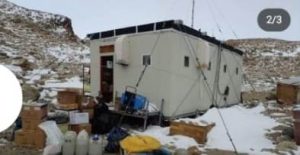 A typical continental fellfield ecosystem has developed in this Valley. Since 1984, the long-term monitoring program has continue dover here, in particolar, to monitor temporal and spatial changes in vegetation of mosses and lichens. To ensure adequate protection and monitoring of these ecosystems, the area of Yukitorisawa has been designated as Antarctic Specially Protected Area (ASPA) No.141 in 2002, under the Antarctic environmental protection act.
A typical continental fellfield ecosystem has developed in this Valley. Since 1984, the long-term monitoring program has continue dover here, in particolar, to monitor temporal and spatial changes in vegetation of mosses and lichens. To ensure adequate protection and monitoring of these ecosystems, the area of Yukitorisawa has been designated as Antarctic Specially Protected Area (ASPA) No.141 in 2002, under the Antarctic environmental protection act.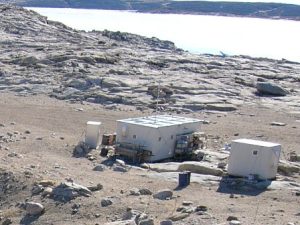 Antarctic research Expedition 1957–62, and named for its proximity to the Langhovde Hills.
Antarctic research Expedition 1957–62, and named for its proximity to the Langhovde Hills.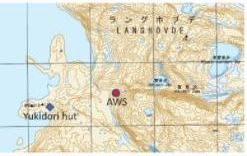
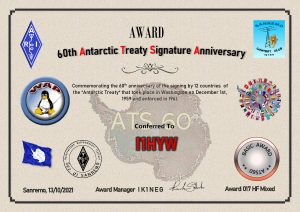 Just take a look at the numbers of Awards issued by the various Countries that have join the initiative, to realize this!
Just take a look at the numbers of Awards issued by the various Countries that have join the initiative, to realize this!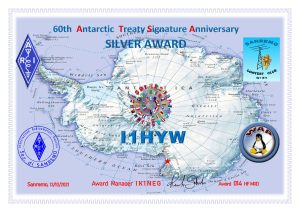 to log a QSO with the Continent that has always fascinated us, and to which, the most exciting pages of the South Pole exploration are linked.
to log a QSO with the Continent that has always fascinated us, and to which, the most exciting pages of the South Pole exploration are linked.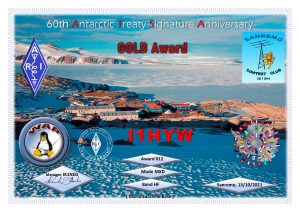 Returning to the 6Øth ATS (
Returning to the 6Øth ATS (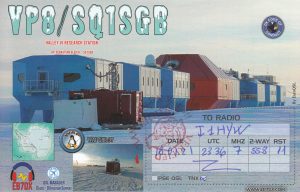
 Well, Danilo IZ1KHY and David F4FKT (see pic aside) met each other at Mario Zucchelli Station (
Well, Danilo IZ1KHY and David F4FKT (see pic aside) met each other at Mario Zucchelli Station (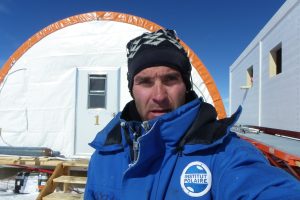
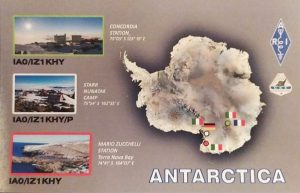 Possibly, according to how the programme evolves:
Possibly, according to how the programme evolves: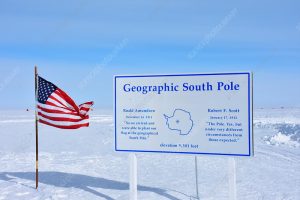 Between April and September, a research station sitting on a high plateau in Antarctica, registered an average temperature of minus 78 degrees Fahrenheit (minus 61 degrees Celsius). That’s the coldest temperature recorded since record keeping began in 1957, and about 4.5 F (2.5 C) lower than the most recent 30-year average, according to “The Washington Post”.
Between April and September, a research station sitting on a high plateau in Antarctica, registered an average temperature of minus 78 degrees Fahrenheit (minus 61 degrees Celsius). That’s the coldest temperature recorded since record keeping began in 1957, and about 4.5 F (2.5 C) lower than the most recent 30-year average, according to “The Washington Post”.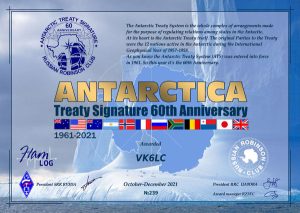 The event launched by
The event launched by 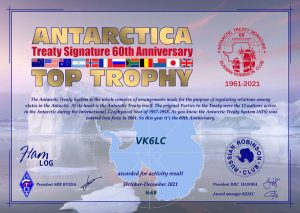 on CW-SSB-FT4-FT8.
on CW-SSB-FT4-FT8.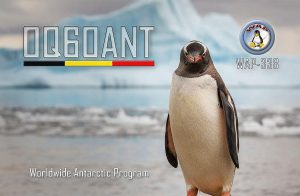 Belgium will also join among the several Countries WW to the ATS anniversary Celebration launched by WAP.
Belgium will also join among the several Countries WW to the ATS anniversary Celebration launched by WAP.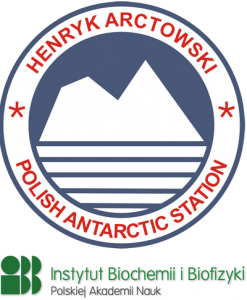 WAP has just received from Poland, a mail send by SP3POB (
WAP has just received from Poland, a mail send by SP3POB ( Like a letter left in the fireplace for Santa Claus, the Archibishop of Montevideo, Cardinal Daniel Sturla (
Like a letter left in the fireplace for Santa Claus, the Archibishop of Montevideo, Cardinal Daniel Sturla (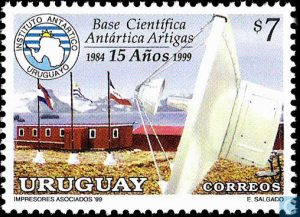 Artigas is a Base active all year round, with an allocation of 8 people in winter and 70 in summer. «We think that for our compatriots, who spend a season there , the presence of a Chapel and a place suitable for the image of our Patroness can only be of benefit» writes the Archibishop of Montevideo, Cardinal Daniel Sturla.
Artigas is a Base active all year round, with an allocation of 8 people in winter and 70 in summer. «We think that for our compatriots, who spend a season there , the presence of a Chapel and a place suitable for the image of our Patroness can only be of benefit» writes the Archibishop of Montevideo, Cardinal Daniel Sturla. But the partiotic strings, such as religious ones and those od nationals prestige, do not seem to have mobilized the Uruguayan authorities in charge of Antarctica, if. until a little less than a year, after the request was fornulated, it has not yet received an answer!
But the partiotic strings, such as religious ones and those od nationals prestige, do not seem to have mobilized the Uruguayan authorities in charge of Antarctica, if. until a little less than a year, after the request was fornulated, it has not yet received an answer! Also laconic was the head of the Army, Real Admiral Leonardo Alonso, who stated that although he does not oppose the idea, he does not see the need of another Chapel when nearby there is already a Catholic one belonging to Chile and another Ortodox belonging to Russia.
Also laconic was the head of the Army, Real Admiral Leonardo Alonso, who stated that although he does not oppose the idea, he does not see the need of another Chapel when nearby there is already a Catholic one belonging to Chile and another Ortodox belonging to Russia.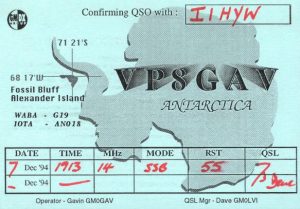 Gavin Taylor is a well known Antarctic veteran. The Old Timers should certainly recall when from 1990 through 1995 he was in Antarctica working for British Antarctic Survey . At that time Gavin was signing VP8GAV. Sure many of us still have his QSL card, kept among the best memories of the time been!
Gavin Taylor is a well known Antarctic veteran. The Old Timers should certainly recall when from 1990 through 1995 he was in Antarctica working for British Antarctic Survey . At that time Gavin was signing VP8GAV. Sure many of us still have his QSL card, kept among the best memories of the time been!